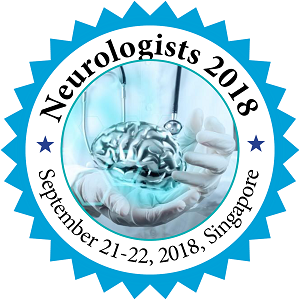
Himanshu Agarwal
Max Institute of Neurosciences, New Delhi
Title: Spinal cord arteriovenous shunts a retrospective analysis
Biography
Biography: Himanshu Agarwal
Abstract
Purpose: To analyse the clinical and angioarchitectural features of Spinal Cord Arteriovenous Shunts, their management strategies and outcome. Compare our data with that of other authors.
Materials and Method: Neurovascular disease database in our department was searched to identify patients with Spinal Cord Arteriovenous Shunts (SCAVS) documented by digital subtraction angiogram in the period between 1988 to December 2014. Retrospective analysis of their medical, imaging and angiographic records was done.
Results: We identified 150 cases of SCAVS. Among these 64 (43%) had spinal cord arteriovenous malformations (SCAVMs), 86 (57%) had spinal cord arteriovenous fistulae (SCAVFs), which comprised of 71 microfistulae and 15 macrofistulae. Overall preponderance of males (72%) was observed. Peak incidence was seen in second (26%) and third (29%) decade of life, mean age being 28 years. Macrofistulae were predominantly seen in first two decades (87%) and filar fistulae were seen mostly above forty years of age (87%). No patient with microfistulae presented in first decade of life. SCAVMs had high incidence in second (34%) and third decade (41%). Dorsal cord was most common location (37%), followed by conus (26%), cervical cord (21%), filum (11%) and radicular (5%). Cervical cord lesions were not seen above fifty years of age. Majority of cases (68%) had progressive myelopathic symptoms of motor weakness, sensory deficits and sphincter disturbances. Majority (58%) of cervical cord lesions had presented with acute onset of symptoms. Imaging evidence of haemorrhage (hematomyelia or SAH) was seen in 45% of cases with acute symptoms and in only one patient with progressive myelopathy. Out of 116 treated cases 89 received endovascular treatment and 27 underwent surgery. Higher degree of obliteration (> 80%) could be achieved in SCAVF (80%) as compared to SCAVM (58%). Improvement or stabilisation of the lesion were seen in 42 (84%) embolised patients with SCAVF and 30 (77%) embolised cases with SCAVMs. Follow-up data available for 16 surgical patients showed improvement or stabilization in eleven and detoriation in five.
Conclusion: Most of the clinical and angiographic characteristics in this series were consistent with other large series, except the fact that we had higher number of microfistulae whereas AVMs constitute higher percentage in these series. Endovascular treatment is effective in treating spinal cord arteriovenous shunts. Surgery can be reserved for selective situations like filar AVFs, lesions which are unfavourable for endovascular embolizations and in failed embolizations.

